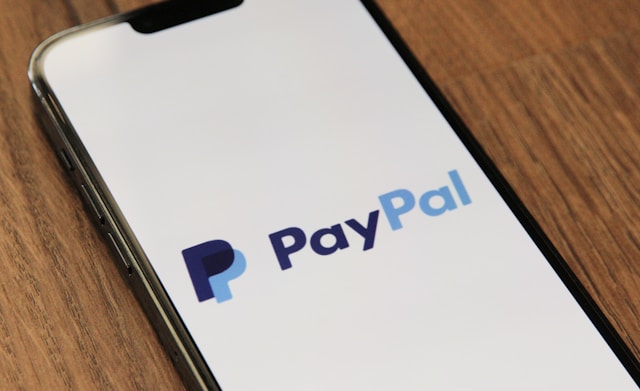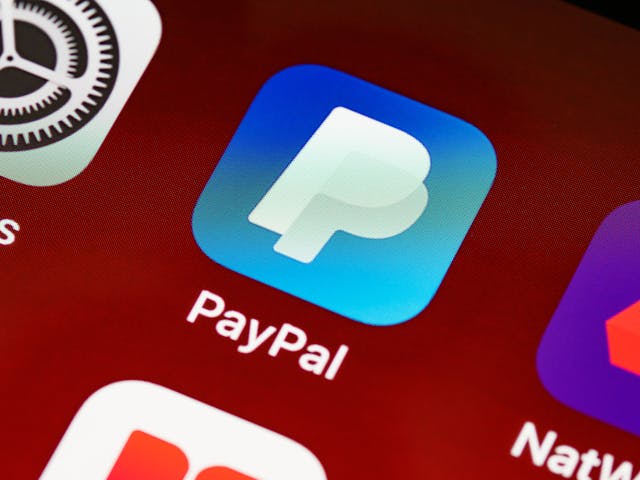PayPal’s story is a tale of innovation, resilience, and strategic marketing. It’s a story that began in the late 1990s and has grown into a global phenomenon. For marketing professionals, PayPal offers a masterclass in how to build and maintain a brand that not only survives but thrives in the ever-changing landscape of digital finance.
The Early Days: A Foundation of Trust
PayPal’s journey began in December 1998 when it was founded by Max Levchin, Peter Thiel, and Luke Nosek. The idea was simple: create a way to transfer money via email. This simplicity belied the complexity of the challenge. They needed to establish trust in a new digital payment method at a time when online transactions were still in their infancy.
PayPal’s marketing strategy in its early days focused on trust and security. The company knew that consumers needed to feel safe transferring money online. They launched campaigns highlighting their robust security measures and buyer protection policies. These campaigns emphasized the safety of using PayPal over traditional methods, establishing a strong foundation of trust with their users.
Leveraging Partnerships for Growth
In 2002, eBay acquired PayPal for $1.5 billion. This acquisition was a turning point for PayPal’s marketing strategy. The integration with eBay allowed PayPal to access a massive user base, rapidly accelerating its growth. PayPal became the default payment option on eBay, giving it exposure to millions of eBay buyers and sellers.
The partnership with eBay was a marketing coup. PayPal’s branding was prominently featured across eBay’s platform, reinforcing its reliability and convenience. This move not only increased PayPal’s user base but also cemented its position as a leading online payment solution.

Expanding Horizons: Entering New Markets
As PayPal grew, so did its ambitions. The company set its sights on global expansion, a strategy that required careful planning and execution. PayPal’s marketing campaigns were tailored to resonate with different cultures and regulatory environments.
One notable campaign was PayPal’s entry into the Chinese market. Knowing the importance of trust in China’s digital landscape, PayPal partnered with Baidu, the leading Chinese search engine. This partnership allowed PayPal to tap into Baidu’s vast user base and leverage its trusted brand image. PayPal’s marketing efforts in China emphasized security and convenience, aligning with local consumer values and expectations.
The Mobile Revolution
The rise of smartphones brought about significant changes in consumer behavior, and PayPal was quick to adapt. Recognizing the potential of mobile payments, PayPal invested heavily in developing a seamless mobile experience. Their marketing strategy highlighted the ease and convenience of using PayPal on mobile devices.
One of the standout campaigns was the launch of the PayPal mobile app. PayPal’s marketing team created a series of ads showcasing real-life scenarios where the app made life easier. From splitting a bill at a restaurant to sending money to a friend, these ads resonated with consumers who were increasingly using their phones for everyday transactions.
Innovating with Social Media
Social media has become a critical component of any marketing strategy, and PayPal has harnessed its power effectively. PayPal’s social media campaigns are designed to engage users, build community, and drive brand loyalty.
One successful campaign was the #PayPalItForward initiative. PayPal encouraged users to share stories of how they used PayPal to help others, whether it was donating to a charity or supporting a friend in need. The campaign went viral, generating thousands of user-generated content pieces that highlighted PayPal’s role in facilitating generosity and community support.
Building a Brand with Content Marketing
Content marketing is another area where PayPal excels. The company produces a wide range of content aimed at educating and engaging its audience. From blog posts and whitepapers to webinars and video tutorials, PayPal’s content strategy is designed to provide value to its users.
One notable example is PayPal’s resource center for small businesses. Recognizing that small businesses are a key customer segment, PayPal created a hub of information tailored to their needs. This included guides on how to optimize online payments, manage cash flow, and leverage PayPal’s tools for business growth. By providing valuable content, PayPal positioned itself as a trusted partner for small business owners.

Leveraging Influencer Marketing
In the age of digital influencers, PayPal has embraced this trend to reach new audiences. The company partners with influencers across various industries to showcase how PayPal can be used in different contexts.
A successful campaign involved partnering with lifestyle influencers to promote PayPal’s mobile app. Influencers shared their personal experiences using the app, highlighting its convenience and ease of use. These authentic endorsements helped PayPal connect with a younger, tech-savvy audience.
Adapting to Change: The COVID-19 Pandemic
The COVID-19 pandemic brought unprecedented challenges, but PayPal’s marketing team was quick to adapt. As consumers shifted to online shopping and digital payments, PayPal launched campaigns to support this transition.
One of the key initiatives was the “PayPal is Here” campaign. PayPal highlighted how its services could help consumers and businesses navigate the new normal. The campaign focused on the safety and convenience of using PayPal for contactless payments, online shopping, and sending money to loved ones. This timely and relevant messaging helped PayPal reinforce its value proposition during a critical period.
Reinforcing Brand Values
Throughout its history, PayPal has consistently reinforced its core brand values: trust, security, convenience, and innovation. These values are at the heart of every marketing campaign, ensuring a consistent and cohesive brand message.
A prime example is PayPal’s “New Money” campaign, which celebrated the power of digital payments to transform lives. The campaign featured real stories of individuals and businesses using PayPal to achieve their goals. By showcasing these success stories, PayPal reinforced its brand values and connected with its audience on an emotional level.
Looking Ahead: The Future of PayPal’s Marketing
As PayPal continues to evolve, its marketing strategy will undoubtedly adapt to new trends and technologies. The company is already exploring opportunities in emerging markets, cryptocurrencies, and blockchain technology. These innovations will likely be accompanied by strategic marketing campaigns designed to educate and engage users.
In conclusion, PayPal’s marketing strategy is a testament to the power of trust, innovation, and adaptability. From its early days of establishing credibility to its current status as a global leader in digital payments, PayPal has consistently leveraged strategic marketing to drive growth and build a loyal user base. For marketing professionals, PayPal’s journey offers valuable lessons in how to create and sustain a successful brand in the digital age.
What Marketers can Learn from PayPal’s Strategy
PayPal’s journey offers rich insights for marketers aiming to build and sustain a successful brand. Here are five key lessons that can be drawn from PayPal’s marketing strategy:
1. Prioritize Trust and Security
From its inception, PayPal placed a strong emphasis on trust and security. In the world of online payments, establishing trust is paramount. PayPal’s early marketing efforts highlighted its robust security measures and buyer protection policies. This focus reassured customers and built a loyal user base.
Lesson for Marketers: In any industry, especially those involving sensitive transactions, prioritizing and clearly communicating your security measures can build trust and encourage customer loyalty.
2. Leverage Strategic Partnerships
PayPal’s acquisition by eBay in 2002 was a game-changer. By becoming the default payment option on eBay, PayPal accessed a vast new user base and gained immense exposure. This partnership allowed PayPal to grow rapidly and establish itself as a leader in online payments.
Lesson for Marketers: Forming strategic partnerships can significantly amplify your brand’s reach and credibility. Look for partnerships that align with your brand values and can open doors to new markets and customers.
3. Adapt to Market Changes
PayPal has demonstrated an ability to adapt to changing market conditions and consumer behaviors. With the rise of mobile payments, PayPal quickly developed a seamless mobile experience and launched targeted marketing campaigns to promote it. During the COVID-19 pandemic, PayPal’s “PayPal is Here” campaign addressed the shift to online shopping and contactless payments.
Lesson for Marketers: Staying agile and responsive to market changes is crucial. Continuously monitor trends and be prepared to pivot your strategy to meet evolving consumer needs and preferences.
4. Harness the Power of Content Marketing
PayPal excels in content marketing, creating valuable resources tailored to its audience. By providing educational content, such as guides for small businesses, PayPal positions itself as a helpful and trusted partner. Their content not only drives engagement but also reinforces their expertise in digital payments.
Lesson for Marketers: Invest in creating high-quality, informative content that addresses your audience’s pain points and interests. Educational content can build authority and trust, fostering deeper connections with your customers.
5. Engage with Social Media and Influencers
PayPal has effectively utilized social media and influencer marketing to engage with diverse audiences. Campaigns like #PayPalItForward encouraged user-generated content and highlighted the community aspect of their brand. Partnering with influencers to promote the PayPal mobile app helped reach younger, tech-savvy users.
Lesson for Marketers: Social media and influencer collaborations can significantly enhance your brand’s visibility and engagement. Encourage user-generated content and leverage influencers to reach new demographics and build authenticity.

